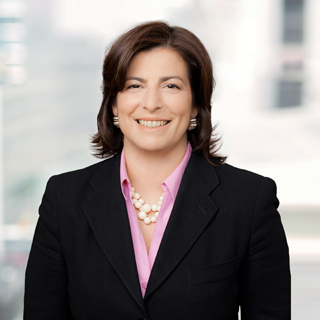
Dear Friends and Colleagues:
These are challenging times for nonprofits and the vulnerable populations many of them serve. A Nonprofit Finance Fund survey of more than 1,100 nonprofit leaders found that almost a third of their organizations operated at a deficit in 2008. Only 12 percent expect to do better than break even in 2009. Sixty-two percent said they anticipated reductions in foundation funding, and 20 percent said the recession’s effect on their organizations would be permanent.
The Edna McConnell Clark Foundation is gratified that, in the aggregate, our grantees achieved 10.6 percent revenue growth in Fiscal Year 2009 while increasing the number of youth they served by 3.4 percent. This is a remarkable accomplishment in a dismal economy, and I congratulate our grantees for their outstanding leadership, hard work and deft adjustments to changing circumstances.
We are also encouraged by the Obama administration’s continuing commitment to investing in expanding proven programs. Office of Management and Budget Director Peter Orszag’s emphasis on “evidence-based policy decisions” and the Department of Education’s guidelines for its Investing in Innovation grants confirm that federal policy resonates with the Clark Foundation’s grantmaking agenda and offers great opportunities to our grantees.
But the near future looks bleak for even the best-performing nonprofits. Although many observers claim the worst of the economic crisis has passed, most are predicting that recovery will be painfully slow. Overall we expect our grantees will see little to no growth in youth served and a decline in revenues in FY10, as state and local budgets continue to be constrained, and new private philanthropic dollars limited. FY 2011 does not seem very promising, either.
This poses a dilemma for the Clark Foundation and for our colleagues in the philanthropic and nonprofit communities who are committed to expanding effective programs: What can dynamic nonprofits and the foundations that fund their growth do during a period of little or no growth? Economic uncertainty and policy changes initiated by the Obama administration but not yet finalized by the White House or Congress make long-term planning extremely difficult. It can even be dangerous if it sets a course an organization cannot alter in response to shifting conditions. How do we, our grantees and our investment partners prepare for the future, however it may unfold? This and related questions are at the heart of our current work at the Foundation.
One thing the Clark Foundation has done is to help the three participants in our Growth Capital Aggregation Pilot and a couple of other grantees conduct scenario planning. They have been assisted in this by the Bridgespan Group, a strategic consulting firm for nonprofits with which we frequently collaborate. This is an example of the kind of extra-financial support we often give grantees in recognition that it takes more than money to sustain and expand a good program. These grantees are using scenario planning to manage downside risks and seize upside opportunities by anticipating and preparing for the worst and the best that might conceivably happen, plus several intermediate scenarios. (“Drought,” for instance, was how one grantee labeled its worst-case scenario, in which economic and political circumstances conspire to dry up public funding for innovative programs entirely.) Our grantees are gaining more control over their futures by outlining alternative courses of action they can take, depending on the particular circumstances they confront and the decisions they must make at critical junctures.
The Obama administration, for example, has cited several high-performing EMCF grantees, including Nurse-Family Partnership, Youth Villages, Citizen Schools and Harlem Children’s Zone, as exemplary organizations. It has called for their programs and programs like theirs to be replicated and expanded nationally. This is a very exciting prospect. Yet it remains unclear how much public funding these grantees may receive, when they might receive it, and whether conditions may be attached to this funding that might compromise the effectiveness of their programs. Scenario planning is giving these grantees the flexibility to prepare for various eventualities, so that when they materialize they will not be rushed into making difficult choices hastily. It is also helping grantees ground their decisions and projections in reality, allocate resources where they can be most productive, and position themselves to make a maximum impact when conditions improve.
We also have been doing scenario planning at the Clark Foundation. Early in 2009 we concluded that economic and political uncertainties made it all but impossible to predict what the world would look like in three to five years for EMCF and our grantees. So we decided not to formulate a long-term strategic business and operating plan to succeed our current one, which ends in 2010. Instead we have developed a transition plan for the next 15 to 18 months that approaches the near term as a labyrinth of risks and opportunities. Negotiating these twists and turns may require agile maneuvers that depart from our standard operating procedures.
The three overarching goals of our transition plan are to:
- Concentrate resources on what matters most while maintaining fiscal discipline.
- Maintain the flexibility to exploit synergies between our investment approach and federal policy initiatives, so we can respond aggressively but prudently to political opportunities that advance our grantees’ objectives.
- Ensure that we emerge stronger than ever with a sound plan for 2012 and beyond.
In accordance with this plan we have looked closely at our operations, streamlining them wherever possible and making sure that all our grants support our goal of serving more low-income youth with programs that have been proven to improve their life prospects. We expect to limit the number of new investments we make in 2010 because our current grantees are our highest priority, but our transition plan gives us the flexibility to take advantage of opportunities when and if they arise.
This, we believe, is how a growth funder can navigate a transitional period when the possibilities for growth seem temporarily to recede. We are supporting our grantees to the fullest, helping them develop alternative courses of action and realistic performance metrics, and doing our best to ensure that they are prepared to resume their upward trajectories as rapidly as circumstances permit.
These turbulent times are also putting to the test our strategy for engaging co-investors in the Growth Capital Aggregation Pilot. Together we must make short-term decisions to ensure the long-term success of this experiment in collaborative funding of nonprofits whose programs have been proven effective and are poised to expand dramatically. Can we adjust, in light of the recession, performance milestones to which the grantees and co-investors agreed when the economy was still booming? Should we repurpose some of the up-front growth capital we provided grantees so they can sustain current operations until the economy improves and/or they receive more public funding?
I look forward to keeping you informed about these developments and others as they occur, and please don’t hesitate to email your questions and comments to [email protected].
In the meantime, I’d like to note that our grantees’ latest projections for 2009, which have been adjusted to reflect the economic downturn, are now available on our website. Some grantees are still developing their projections for 2010, and we will report these when they are completed. You will also find our website has been revised and updated to reflect our latest thinking about structuring investments to meet the needs of nonprofits at different stages of organizational development. Sharing such information is part of our ongoing commitment to accountability and transparency. I hope you find it interesting and helpful.
Sincerely,
Nancy Roob




